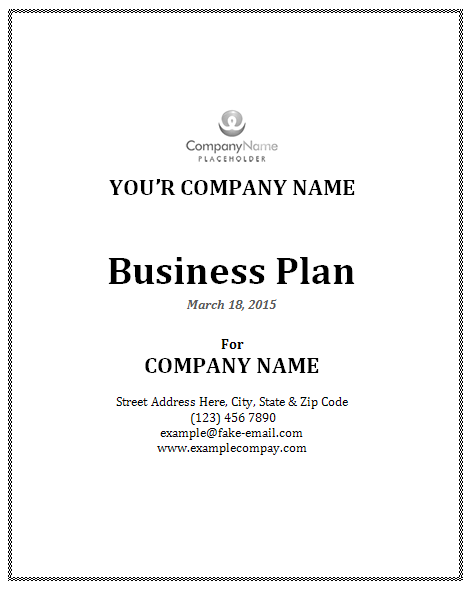Hello Everyone, welcome to my blog!
I have come again with another interesting and educational topic. Writing a business plan is paramount before setting up any business or enterprise. In this article, we highlighted the important steps to follow while writing a business plan.
What is a business plan?
A business plan is a written document that outlines the goals, strategies, and operational details of a business venture. It serves as a roadmap for the business's future, providing a clear and comprehensive overview of how the business will operate, grow, and achieve its objectives. A well-crafted business plan is essential for guiding the business, attracting investors or lenders, and making informed decisions.
Writing a business plan is a crucial step in the process of starting or growing a business. A well-structured business plan helps you outline your goals, strategies, and financial projections, and it serves as a roadmap for your business's future. Here's a step-by-step guide to help you write a comprehensive business plan:
Executive Summary:
- Provide a concise overview of your business idea, goals, and mission.
- Highlight key points from each section of your business plan.
- Include your business name, location, and a brief description of your products/services.
Business Description:
- Detail the nature of your business and explain what makes it unique.
- Describe your industry, target market, and customer needs.
- Discuss your competitive advantage and how you plan to stand out.
Market Analysis:
- Conduct thorough market research to understand your industry and target market.
- Define your target audience and their demographics, preferences, and behaviors.
- Analyze your competitors, their strengths, weaknesses, and market share.
Organization and Management:
- Describe the structure of your business (sole proprietorship, partnership, corporation, etc.).
- Provide information about your management team, their roles, and expertise.
- Highlight any key advisors or partners.
Products or Services:
- Outline the details of your products or services, including their features and benefits.
- Explain how your offerings meet customer needs and solve their problems.
Marketing and Sales Strategies:
- Outline your marketing plan, including branding, advertising, and online presence.
- Define your sales strategy, distribution channels, and pricing strategy.
Funding Request (if applicable):
- Specify the amount of funding you need and how you'll use it.
- Explain how the funding will contribute to the growth and success of your business.
Financial Projections:
- Provide detailed financial forecasts for the next three to five years.
- Include projected income statements, balance sheets, and cash flow statements.
- Highlight key financial metrics such as sales, expenses, profits, and break-even points.
Appendix:
- Include any additional information that supports your business plan (e.g., market research data, legal documents, resumes of key team members, product images, etc.).
Tips for Writing an Effective Business Plan:
- Keep it clear and concise; avoid unnecessary jargon.
- Tailor your plan to your target audience (e.g., investors, lenders, partners).
- Use visuals (charts, graphs, images) to illustrate key points.
- Be realistic and grounded in your financial projections.
- Continuously update and revise your business plan as your business evolves.
Remember that a business plan is a dynamic document. It should reflect your business's current status and future aspirations while allowing for adjustments as circumstances change.
Common differences between small scale business plan and large scale business plan:
While the fundamental components of a business plan are similar for both small and large businesses, the level of detail and complexity may vary based on the size and complexity of the business. Here's how the format of a business plan might differ between small and large businesses:
1. Executive Summary:
- Both small and large businesses should include an executive summary that provides a concise overview of the business, its goals, and key highlights.
- For larger businesses, the executive summary might be more extensive, summarizing multiple aspects of the business's operations and strategies.
2. Business Description:
- Small businesses may have a more straightforward business description that focuses on the core products/services and their unique value proposition.
- Large businesses may need to provide a more comprehensive description of their various divisions, product lines, and market segments.
3. Market Analysis:
- Small businesses might have a narrower focus on their local market or a specific niche.
- Large businesses may conduct more extensive market research across multiple regions and target segments.
4. Organization and Management:
- Small businesses may have a simpler organizational structure with fewer key team members.
- Large businesses will likely need to provide detailed information about their executive team, management hierarchy, and organizational departments.
5. Products or Services:
- Small businesses may have a limited range of products or services to describe.
- Large businesses might have multiple product lines, requiring a more comprehensive overview of each.
6. Marketing and Sales Strategies:
- Both small and large businesses should outline their marketing and sales strategies, but larger businesses may have more extensive marketing efforts and distribution channels.
7. Funding Request (if applicable):
- The funding request might differ significantly based on the scale of the business and its financial needs. Larger businesses may seek substantial funding for expansion or acquisitions.
8. Financial Projections:
- While the components of financial projections are similar, the complexity and detail will differ. Large businesses will likely have more intricate financial forecasts, including breakdowns by division or product line.
9. Appendix:
- Both small and large businesses can use the appendix to provide additional supporting materials, but larger businesses may include more extensive data, market research, and legal documents.
In summary, the basic structure of a business plan remains consistent across small and large businesses. However, the depth of information, the scope of analysis, and the level of detail will vary based on the size and complexity of the business. It's essential to tailor your business plan to meet the specific needs and expectations of your intended audience, whether they are potential investors, lenders, or other stakeholders.
